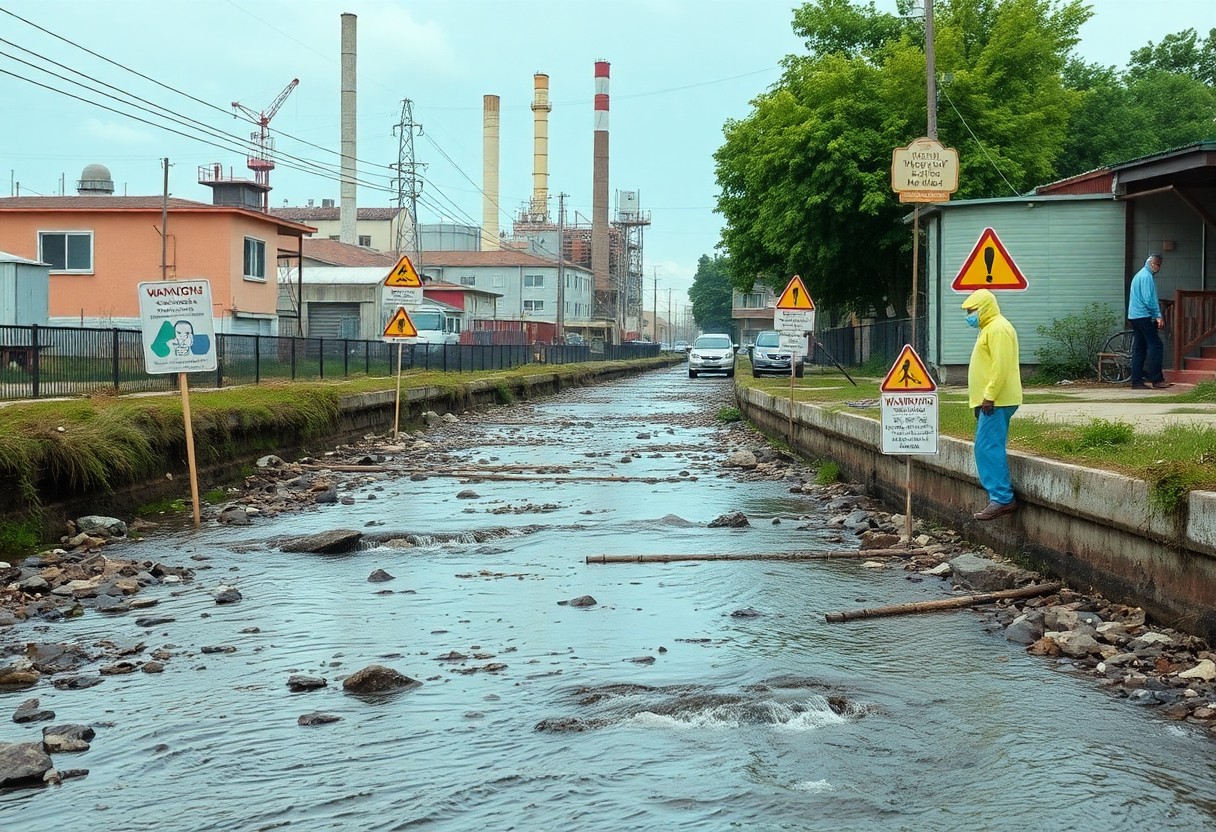With increasing awareness of PFAS contaminants in water supplies, it’s important for you to understand the potential health risks these forever chemicals pose to your community and environment. These substances have been linked to serious health issues, including cancer and immune system problems. As researchers uncover more about their pervasive presence, the time to act is now. You have the power to advocate for clean water initiatives and support policies aimed at reducing PFAS exposure, ensuring a safer future for yourself and generations to come.

Understanding PFAS
While PFAS, or per- and polyfluoroalkyl substances, have gained attention for their persistence in the environment and potential health impacts, many people remain unaware of their significance. These synthetic chemicals, often dubbed “forever chemicals,” are used in a variety of industries due to their water- and oil-repellent properties. You must understand their sources and effects to grasp the urgency of addressing PFAS contamination.
Definition and Types of PFAS
The definition of PFAS encompasses a large class of human-made chemicals that resist degradation in the environment. Common types of PFAS include:
| PFOS | Perfluorooctanesulfonic acid |
| PFOA | Perfluorooctanoic acid |
| PFNA | Perfluorononanoic acid |
| PFDA | Perfluorodecanoic acid |
| FTOH | Fluorotelomer alcohols |
Assume that understanding these various types and their applications will help you identify potential exposure routes in your daily life.
Sources of PFAS Contamination
Sources of PFAS contamination can be found in many everyday products and industrial processes. These substances are often used in food packaging, non-stick cookware, stain-resistant textiles, and firefighting foams.
With widespread use, the pollution from PFAS can leach into your drinking water, soil, and even the foods you consume. Key sources include manufacturing facilities, military bases that utilize firefighting foams, and wastewater treatment plants that may discharge these chemicals. This persistent contamination poses risks to both human health and the environment, making it imperative for you to stay informed and advocate for necessary changes.
Health Effects of PFAS
Clearly, PFAS exposure poses significant health risks, impacting various systems in your body. Research indicates that these toxic chemicals are linked to serious health issues including immune system dysfunction, hormonal imbalances, and increased risks of certain cancers. As PFAS accumulate in your body over time, acknowledging these dangers is vital for your well-being and that of your loved ones.
Short-Term Exposure Risks
Risks associated with short-term PFAS exposure can manifest in several ways, including skin irritation, gastrointestinal disturbances, and temporary immune suppression. While these effects may seem less severe compared to long-term implications, they can still disrupt your daily life and overall health.
Long-Term Health Implications
PFAS exposure can lead to serious long-term health complications that are not immediately apparent. Chronic exposure has been associated with kidney cancer, testicular cancer, and other ailments that may take years to develop.
For instance, studies have shown that individuals with prolonged PFAS exposure face a significantly higher risk of developing thyroid disease, high cholesterol, and liver damage. Furthermore, these chemicals can disrupt your endocrine system, leading to reproductive issues and adverse developmental effects in children. Staying informed about these long-term health implications is vital for making decisions that protect your health and your family’s future.
Environmental Impact
There’s an urgent need to recognize the environmental impact of PFAS contamination. These harmful substances not only threaten your health but also disrupt ecosystems, affecting wildlife and vegetation. The presence of PFAS in the environment can lead to a chain reaction, altering biological processes and causing long-term ecological damage. Understanding this impact is necessary for advocating strong environmental protections and safer alternatives.
PFAS Persistence in Nature
The persistence of PFAS in nature is alarming. These compounds resist degradation, which means they can remain in your environment for decades or even centuries. This long-lasting presence results in the accumulation of PFAS in soil and water bodies, making it increasingly difficult to eliminate their presence from our ecosystems.
Contamination of Water Sources
With increasing reports of PFAS in drinking water, it’s crucial to understand the implications for your health and safety. Contamination occurs primarily through industrial discharges and runoff from firefighting foam, leading to significant risks in both urban and rural settings.
Another factor to consider is that once PFAS infiltrates water sources, it can affect entire communities. Because these chemicals are often not removed through conventional water treatment processes, they can end up in your tap water, posing serious health risks such as cancer and hormonal disruptions. This underscores the importance of advocating for regulatory actions to monitor and reduce PFAS contamination in our vital water resources.
Regulatory Framework
Not all regulatory frameworks address the urgency of PFAS contamination. The lack of uniform standards across states creates confusion and inconsistency in environmental protection. Federal regulations have yet to establish a definitive maximum contaminant level (MCL) for these substances, leaving many communities vulnerable to exposure.
Current Legislation and Standards
Beside ongoing discussions in Congress, various federal and state agencies have implemented measures to address PFAS contamination. The Environmental Protection Agency (EPA) has proposed guidelines and health advisories, but these do not equate to enforceable regulations, which can leave you feeling uncertain about safety.
Gaps in Existing Regulations
About the existing regulations, many states have not prioritized PFAS testing or reporting requirements, resulting in insufficient data on the extent of contamination. You may find yourself unaware of the potential risks in your water supply due to these regulatory gaps.
Regulatory actions concerning PFAS are often slow and do not cover all necessary aspects of environmental health. While some standards exist, they may not account for the wide array of PFAS compounds. This leads to a lack of comprehensive testing and monitoring, leaving you at risk. With no federal maximum contaminant levels set, the burden often falls on states to create their guidelines. However, the inconsistent state of regulations means many communities are left unprotected, underscoring the need for a federal framework that prioritizes public health.
Community Action
After recognizing the significant threat posed by PFAS contamination, it’s crucial for you to engage in community action. Mobilizing grassroots efforts can amplify awareness and drive change within your community. You can join local advocacy groups, participate in clean-up events, and create educational programs that encourage others to understand and tackle PFAS issues collectively.
Strategies for Community Awareness
Below are some effective strategies to raise community awareness about PFAS contamination. You can organize workshops, distribute informational flyers, and utilize social media platforms to share facts and personal stories. Collaborating with local schools and organizations can further enhance your outreach, ensuring that the message about PFAS and its risks reaches a wider audience.
Engaging with Policymakers
An crucial step in combating PFAS contamination is actively engaging with your policymakers. You can write letters, make phone calls, or schedule meetings to express your concerns and advocate for stricter regulations on PFAS usage and discharge.
Further, by forming coalitions with other concerned citizens, you can strengthen your voice and influence in the decision-making process. Your efforts should focus on urging policymakers to implement robust testing programs and enact regulations that limit PFAS emissions in your community. Advocate for funding towards clean-up initiatives and prioritize the health of your community by pushing for policies that protect water sources from contamination. Your engagement can lead to meaningful change and increased accountability, ensuring a safer environment for all.
Remediation Technologies
Keep in mind that addressing PFAS contamination requires a multifaceted approach. Various remediation technologies are being developed and implemented to target these persistent substances in the environment. Effective strategies, ranging from filtration systems to bioremediation techniques, aim to mitigate the risks associated with PFAS while ensuring the safety of your water supply and ecosystem.
Current Solutions for PFAS Cleanup
Below are some of the current solutions for PFAS cleanup, including adsorption, high-temperature incineration, and advanced oxidation processes. Each method has its strengths and weaknesses, so it’s important to assess which solution best fits your specific situation. The effectiveness of these methods can vary based on the concentration of PFAS and the environmental context.
Emerging Innovations
Beside traditional cleanup methods, recent innovations hold promise for your understanding of PFAS remediation. Technologies such as plasma treatment, electrochemical oxidation, and tailored nanomaterials are being researched and deployed to enhance removal efficiency and reduce costs. These emerging solutions aim to respond to the growing demands of PFAS contamination, providing you with hope for a cleaner future.
With the rise of emerging innovations, you can expect to see significant advancements in the fight against PFAS. Technologies like plasma treatment offer the potential for rapid breakdown of PFAS compounds, while electrochemical oxidation allows for efficient transformation into less harmful substances. Moreover, tailored nanomaterials show great promise in improving adsorption rates, making your cleanup processes more effective and sustainable. Investing in such innovations can drastically improve your ability to manage PFAS contamination and protect both public health and the environment.
Conclusion
To wrap up, PFAS contamination is a pressing issue that demands your attention and action. As you become informed about the risks these chemicals pose to health and the environment, it is important for you to advocate for better regulations and practices. Your involvement can contribute to a cleaner future, protect your community, and ensure that generations to come are safeguarded from the harmful effects of these persistent substances. Take the initiative to educate yourself and participate in the push for change.




















